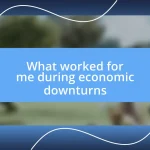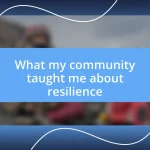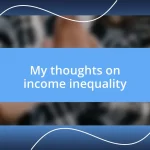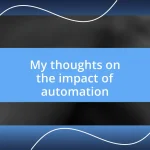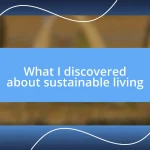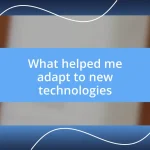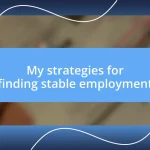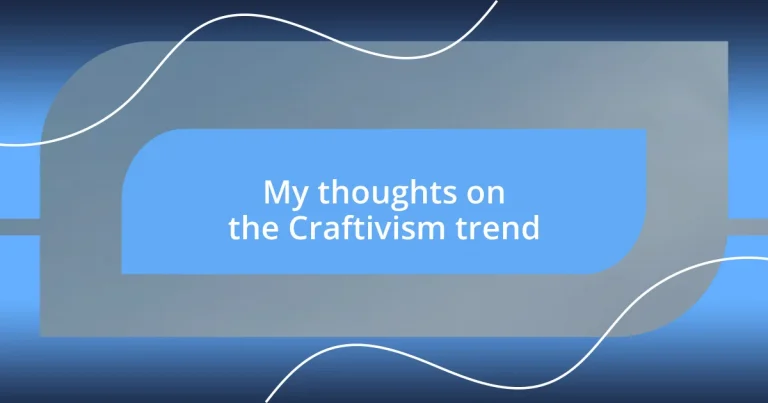Key takeaways:
- Craftivism merges crafting with activism, enabling personal expression and community engagement around social issues.
- Historical roots include feminist art movements and grassroots activism in the late 20th century, evolving into digital platforms for global collaboration.
- Key principles involve intentionality, community connection, accessibility, sustainability, and empowerment through crafting, promoting meaningful dialogues and change.
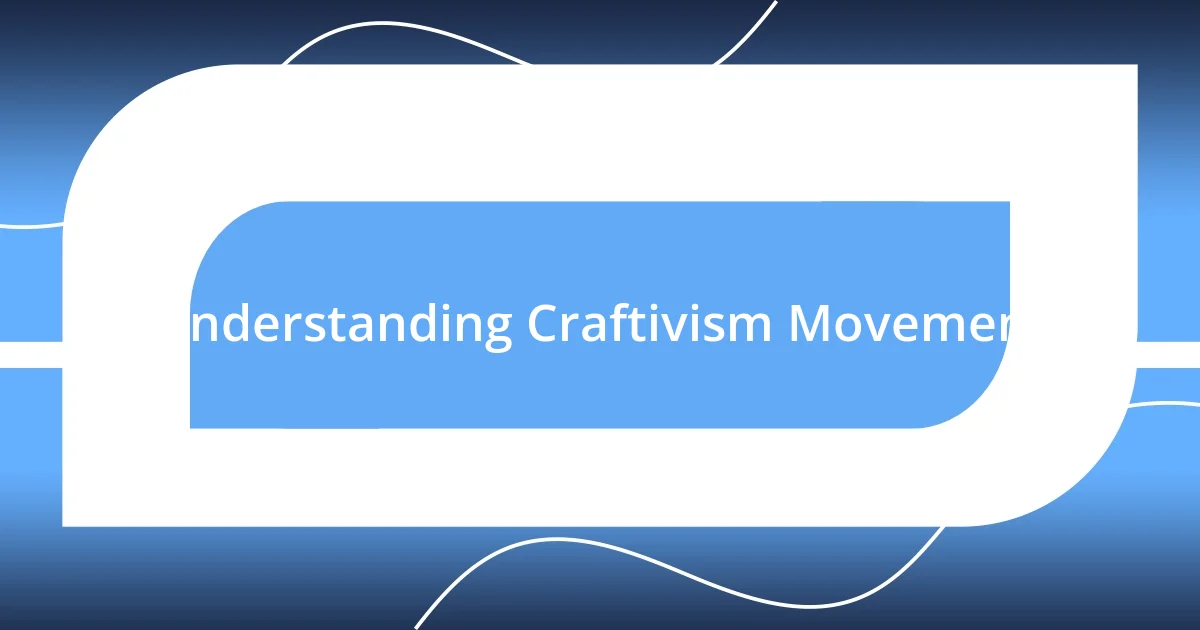
Understanding Craftivism Movement
Craftivism, a delightful blend of crafting and activism, is not just about creating; it’s about creating with purpose. For me, the first time I stitched a message onto fabric, I felt an electrifying sense of connection to the cause I was supporting. It made me wonder: how can something as simple as needle and thread spark conversations on pressing social issues?
The movement fosters a unique space where individuals can express their beliefs through hands-on creativity, turning personal sentiments into communal messages. I remember participating in a local craftivism event where each piece told a story—my heart swelled seeing how diverse perspectives could come together so beautifully. Isn’t it fascinating how a shared hobby can become a powerful tool for social change?
Moreover, craftivism encourages reflection on what we value as a community. When I think about the intentionality behind each crafted piece, it often evokes a sense of empowerment within me. What about you—have you ever considered how your hobbies could ignite change in the world around you?
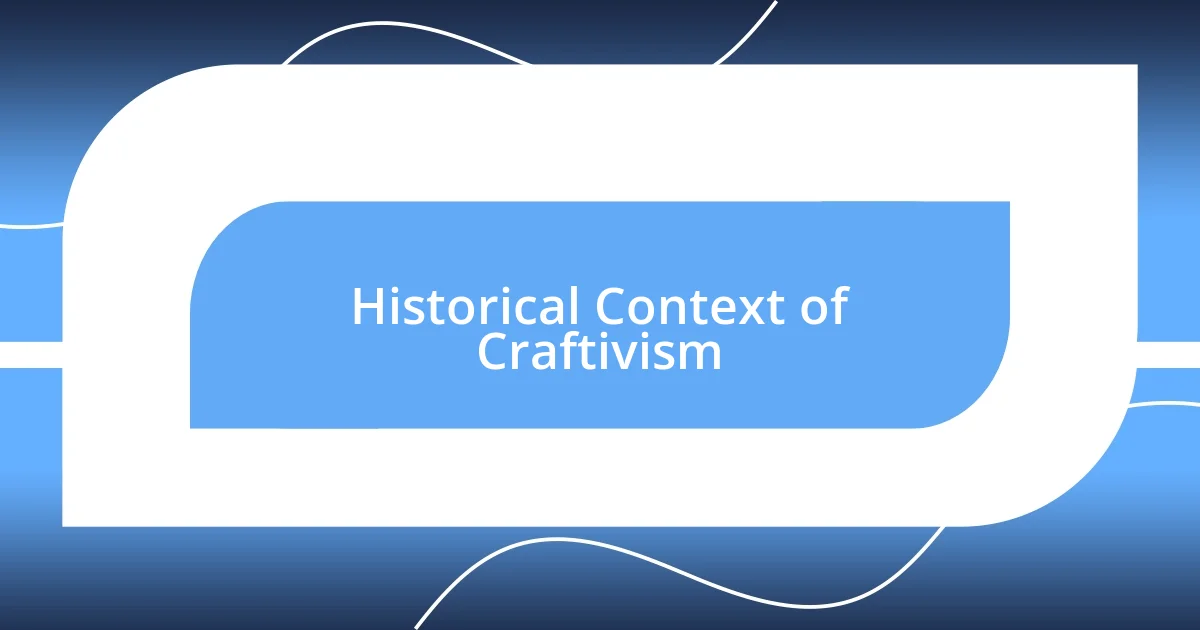
Historical Context of Craftivism
Craftivism has roots that stretch back to various social movements, especially during the late 20th century. The introduction of feminist art in the 1970s encouraged many individuals to blend traditional craft techniques with political messages. I recall reading about feminist artists who used knitting and quilting to assert their voices, and it struck me that these were not merely hobbies, but acts of protest. The realization that crafting can challenge societal norms and provoke thought truly changed how I view my creative projects.
In the 1980s and 1990s, a resurgence of interest in handmade crafts coincided with the rise of grassroots activism. This was a time when individuals began to use their crafting skills to address issues like environmentalism and social justice. I remember coming across an initiative where people used recycled materials to create art, transforming waste into powerful statements. This made me ponder the relationship between consumption and creativity. It’s impressive how these movements paved the way for today’s craftivists to engage with global issues using simple tools.
The evolution of craftivism has also spanned digital platforms, blending traditional crafts with online activism. I’ve witnessed how social media can amplify voices and connect crafters from around the world. The immediacy of sharing crafted messages on platforms like Instagram or Pinterest can mobilize community support swiftly. Have you ever joined an online craftivism group? The camaraderie and collective purpose I’ve found in such spaces remind me that, together, we can stitch narratives that resonate far beyond our own communities.
| Period | Key Characteristics |
|---|---|
| 1970s | Feminist art movements; blending crafts with political messages. |
| 1980s-1990s | Grassroots activism; addressing environmentalism and social justice through handmade crafts. |
| 2000s-Present | Integration of digital platforms with traditional crafts; the rise of online communities and movements. |
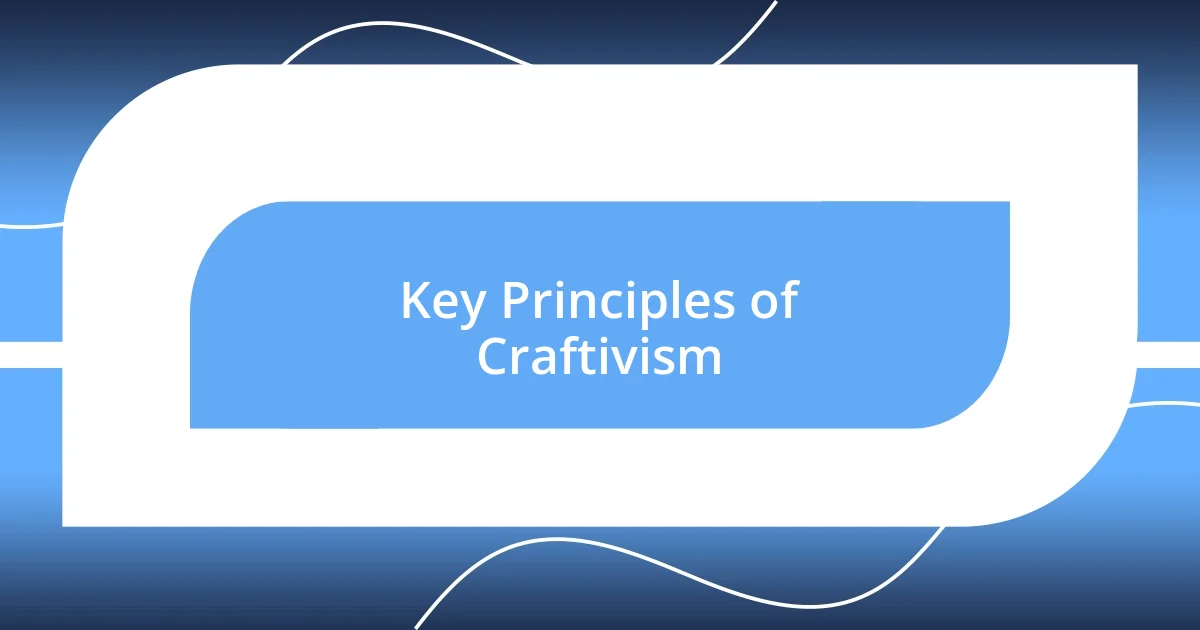
Key Principles of Craftivism
The key principles of craftivism revolve around intentionality, community, and the transformative power of creativity. Each crafted piece is not merely an object; it’s a message woven into the fabric of society. I felt this acutely during a group project where we created a collective quilt—each patch bore individual stories, and it was exhilarating to see how those personal narratives could be stitched together into something larger than life. It’s a reminder that our creativity can serve as a bridge to deeper understanding among diverse groups.
Here are some foundational principles that define craftivism:
- Purposeful Creation: Every crafted item should carry a meaningful message or intention.
- Community Engagement: Craftivism thrives in collaboration, bringing people together to share their stories.
- Accessibility: Crafting should be approachable, encouraging participation from individuals of all backgrounds and skill levels.
- Reflection and Empowerment: Craftivism is an avenue for self-reflection, often fostering a sense of empowerment among crafters as they explore social issues.
- Sustainability: Utilizing recycled materials often emphasizes environmental consciousness, merging activism with eco-friendly practices.
When I think about these principles, I recall a collaborative event where each participant contributed a handmade token addressing a local issue. The sense of unity and shared purpose was palpable. There’s something undeniably fulfilling about knowing that our small actions—whether knitting, sewing, or crafting—can collectively create waves of change in our communities.
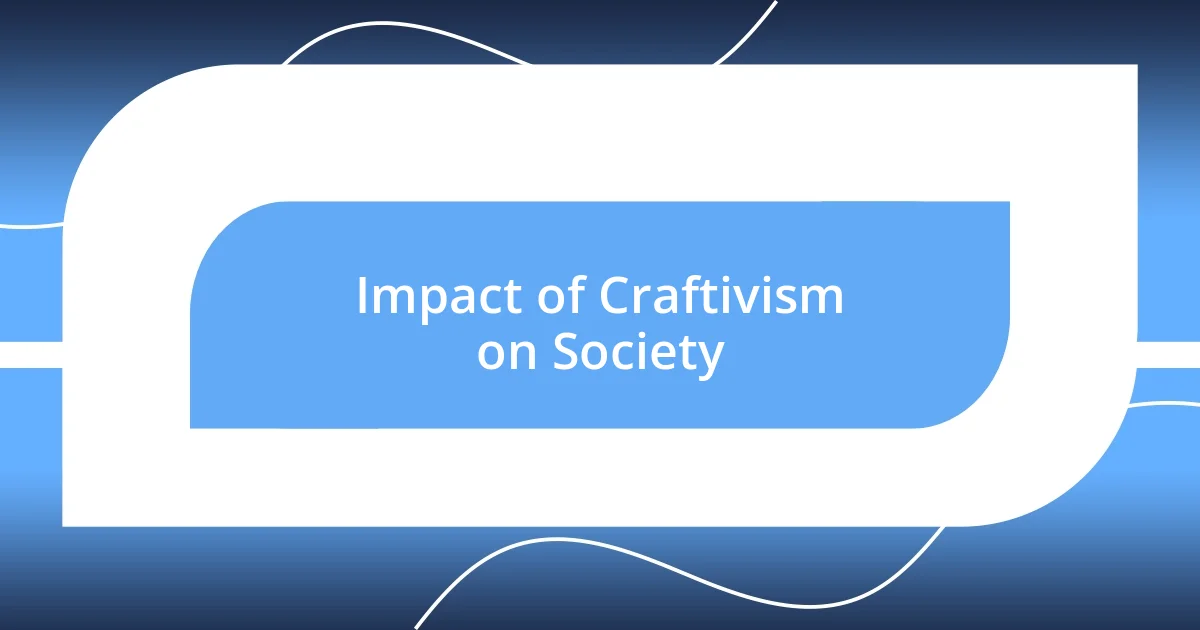
Impact of Craftivism on Society
The impact of craftivism on society is profound, as it fosters a sense of community and encourages social dialogue. I remember participating in a local craft fair where each booth showcased handmade goods tied to social causes. It was heartwarming to see people passionately discussing their crafts and the stories behind them, revealing how crafting could ignite conversations on critical issues. Isn’t it incredible how a simple piece of art can become a catalyst for change?
Moreover, craftivism empowers individuals to express themselves and challenge societal norms. When I created a piece highlighting mental health awareness, the feedback was overwhelmingly positive. People shared their own experiences, and it felt like we were weaving a fabric of shared understanding. This is a testament to the idea that crafting can break down barriers and inspire vulnerability in a world that often feels disconnected.
The reach of craftivism extends beyond local communities to a global stage, thanks to digital tools. I’ve seen how projects like global yarn bombing initiatives have brought people together from different cultures, all aiming to beautify public spaces while carrying diverse messages. How often do we get to witness unity in such a colorful and tactile way? Craftivism not only beautifies but also builds bridges, showing that, through creativity, we can engage in essential dialogues across borders.
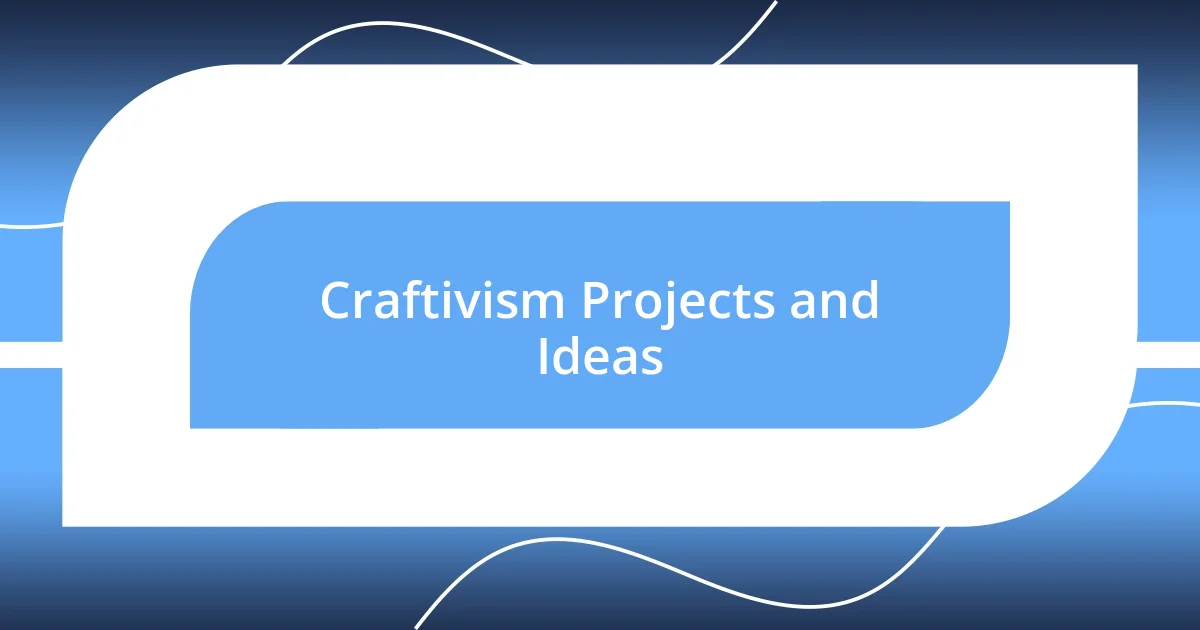
Craftivism Projects and Ideas
Craftivism projects can take many forms, from personalized pieces of textile art to large-scale community murals. I’ve participated in a project where we created fabric banners to raise awareness for climate change. The experience was eye-opening; each stitch was a deliberate choice, representing our hopes and fears about the planet. Can crafting really convey such heavy themes? Absolutely—it transforms abstract concerns into tangible symbols that provoke thought and inspire action.
One of my favorite ideas is organizing a yarn-bombing event in your neighborhood. I remember the thrill of wrapping trees and park benches with colorful knitted pieces, turning ordinary spaces into vibrant showcases of community spirit. The joy of seeing passersby stop, smile, and take photos was incredibly rewarding. It sparked conversations among strangers, proving that creativity can connect us in surprising ways. Have you ever thought about how such simple acts can bring shared joy and change perspectives?
You might also consider starting a “Craft for a Cause” club, where members meet regularly to create items for local charities. I’ve seen how the act of working together on projects, like making blankets for homeless shelters or crafting toys for children in need, can foster deeper connections among participants. Each item crafted carries not just the maker’s skill, but their heart and intention, transforming a simple act of crafting into a meaningful contribution to society. Do you see how these shared experiences can cultivate empathy and understanding?
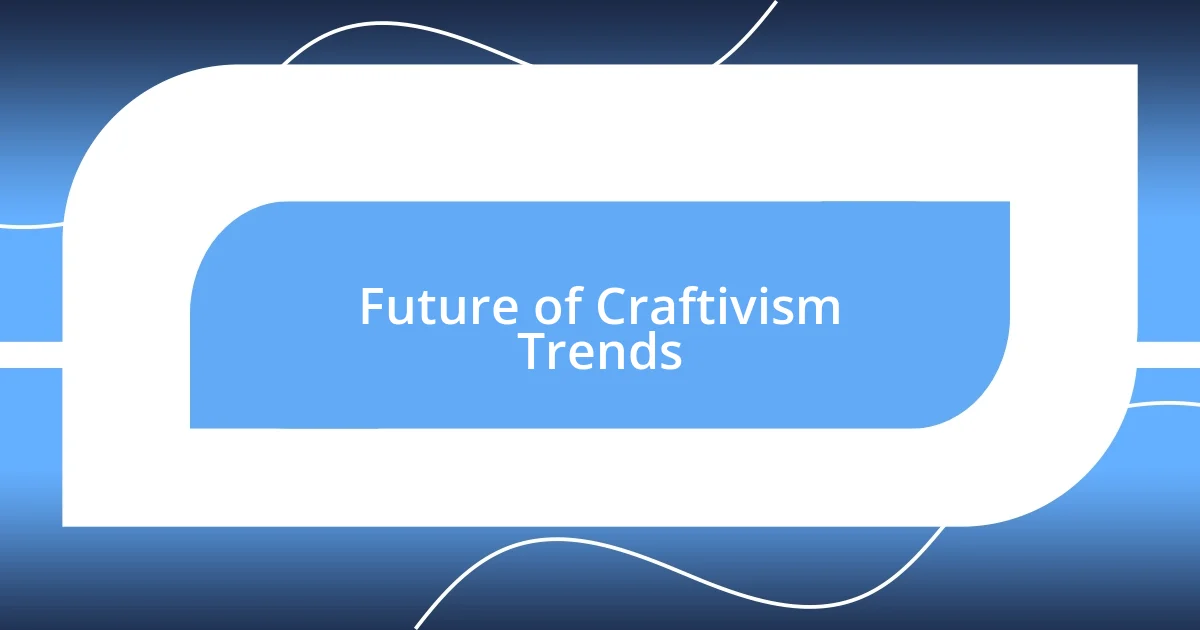
Future of Craftivism Trends
The future of craftivism trends excites me, especially with the rising awareness of social issues in the crafting community. I’ve noticed more people using their craft projects to support causes like environmental justice and racial equality. It’s fascinating to think about how a homemade quilt can now serve not just as a cozy blanket but also as a powerful statement about the world we live in. Will we see more craftivism merging with activism as these trends evolve? I certainly hope so.
As we move forward, digital platforms will play a pivotal role in spreading craftivism. I’ve seen many creators using Instagram and TikTok to share their work, each post sparking discussions about their underlying messages. This blend of technology and craftsmanship breaks geographical boundaries, encouraging global collaboration on important issues. Isn’t it incredible how engaging online can lead to offline movements?
In addition, I imagine future craftivism will embrace even wider forms of expression—like using augmented reality in craft projects to create interactive experiences. I once attended a workshop where we combined traditional sewing with digital design, and I was mesmerized by the possibilities. How far can we push the boundaries of creativity? It feels like we’re only scratching the surface, and I can’t wait to see what future crafters will bring to the table.



